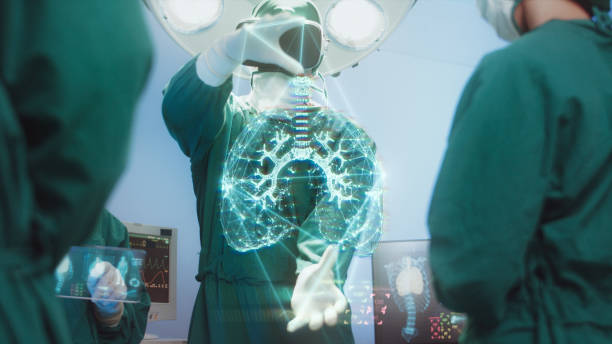Today, the integration of Virtual Reality in medical world has already made significant changes.
From surgeons to nurses, everyone is using virtual reality. Surgeons are employing virtual reality technology to practice complex procedures, and medical students can simulate surgeries with incredible realism.
Not only it is useful for healthcare practitioners, but it is also benefiting the patients. Patients can benefit from exposure therapy, where VR helps them confront phobias, post-traumatic stress disorders, and even chronic pain. And, how can we forget about VR as an educational tool? Especially among the medical students and residents.
But the future is brimming with even more possibilities. Let’s put on our VR headsets and take a peek at the reasons that make virtual reality lab for science colleges a necessity today-
Medical Training & Education
In the coming years, medical education will undergo a parallel shift where VR plays a central role.
This means instead of traditional textbooks and lectures, aspiring doctors will immerse themselves in lifelike virtual environments. They can walk into the virtual room where they can touch the 3D anatomical models, explore the delicacy and intricacies of the human body, and even witness diseases at a cellular level.
This hands-on learning experience of VR training in healthcare will not only enhance their understanding but also improve their retention rates, thus, making them better-prepared physicians.
Telesurgery
The boundaries of what’s possible in surgery are expanding with VR.
Telesurgery, which involves performing surgery from a remote location, is expected to become even more precise and reliable with the integration of VR in the medical field in the near future.
Just imagine the budding surgeons wearing VR headsets. Why? Because the technical advancements in Virtual Reality will provide a 3D view of the patient’s body and they can operate with enhanced dexterity.
This means, there will be no or little chance of error while performing surgical procedures.
Moreover, this immersive technology has the potential to reach patients in remote areas and provide expert care across great distances.
Pain Management
Virtual reality (VR) therapy is rapidly emerging as a non-pharmacological intervention for pain relief.
It can be said that pain management in VR offers a ray of hope. By transporting patients into serene and immersive virtual environments, VR has the potential to mitigate chronic pain while reducing the reliance on addictive painkillers.
Unlike traditional pharmaceutical interventions, VR therapy addresses pain management through distraction and relaxation. This therapy engages patients towards captivating, stress-reducing experiences that help divert their attention from discomfort, making it a safer alternative to opioids.
Furthermore, it has the added benefit of being non-addictive, making it a potential game-changer in the fight against opioid addiction.
As we journey into the future of healthcare, VR’s role in pain management promises to not only alleviate suffering but also contribute to the broader mission of combatting opioid dependence and providing safer, more holistic approaches to healing.
Rehabilitation
Recovering from injuries or surgeries mostly entails a challenging and sometimes monotonous journey.
But, Virtual reality (VR) is here to help you in this process. VR provides a unique and engaging approach to motivating patients during physical therapy by offering a fresh perspective on recovery.
The Incorporation of VR into rehabilitation programs allows patients to immerse themselves in a world of fun and interactive games that guide them through prescribed exercises. These virtual experiences not only make the road to recovery less tedious but also more enjoyable. With their attention captivated by these immersive environments, patients are more likely to stay committed to their therapy regimens, ultimately leading to better outcomes.
This innovative use of VR in pain management not only enhances the rehabilitation process but also paves the way for a brighter future in which recovery becomes a dynamic and exciting part of the healing journey.
Treating Mental Health
The future of VR in healthcare also holds promise for mental health treatment.
Therapists can use VR technology to create a safe space for patients to confront their fears, phobias, and traumas in a controlled environment. VR therapy could become a game-changer for those struggling with conditions like post-traumatic stress disorder, anxiety, and depression.
Conclusion
Virtual reality is a technology that is constantly evolving itself to reshape the medical field profoundly. Its applications in medical training, surgery, pain management, rehabilitation, and mental health treatment have already opened new frontiers of healthcare.
However, with great power comes great responsibility. It is imperative to approach the integration of VR in medicine and surgery with caution and ensure that its use is ethical and patient-centric.
The future of virtual reality in the medical field is a testament to the ever-evolving and dynamic nature of healthcare. As we look ahead, we must strive to harness this technology’s full potential to provide safer, more effective, and patient-friendly healthcare solutions.
So, gear up for a future where the lines between the real and the virtual blur, and where the healing power of VR takes us beyond our wildest dreams.





